
Tiger Moth Doppeldecker Foto & Bild luftfahrt, oldtimerflugzeuge, verkehr & fahrzeuge Bilder
In September 1931, a prototype of the modified DH60, the DH60T Tiger Moth, was sent for testing. Pleased with the new aircraft, an order for a production prototype was issued. This flew on October 26 of the same year and was ordered into production for the RAF shortly after. By this stage, the DH60T had undergone so many modifications, de.

De Havilland DH82A Tiger Moth Untitled Aviation Photo 2534489
1 Updated: Sunday, October 22, 2023 04:20 PM DEHAVILLAND DH-82A TIGER MOTH II Piston Single Aircraft Price: USD $79,339 USD $79,339 + GST = USD $87,273 ( GST applies to buyers in Australia) ( Price entered as: AUD $120,000) Payments as low as USD $532.56 / monthly* Aircraft Location: Luskintyre, New South Wales, Australia Serial Number: NA
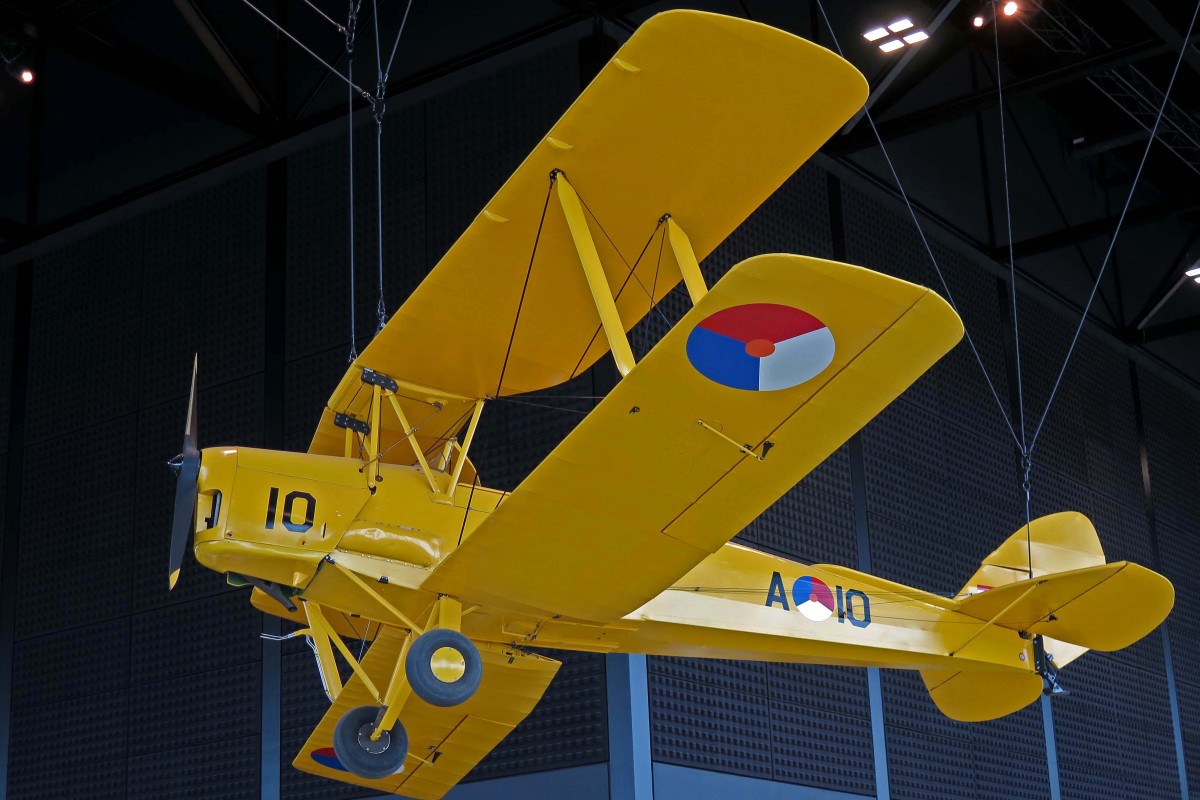
DeHavilland DH82 A "Tiger Moth" Fotos Flugzeugbild.de
A total of 8389 Tiger Moths were built by de Havilland and its licensees between 1931 and 1945. The first British-built D.H. 82 Tiger Moth for Canadian use was assembled at Downsview, Ontario in the summer of 1935. The Tiger Moth was an obvious replacement for the DH 60 Moth that was in air force service at the time, but the RCAF was in a state.

DEXMM De Havilland DH.82A Tiger Moth Foto & Bild flugzeug, oldtimer, industrie Bilder auf
Die de Havilland DH.82 Tiger Moth ( deutsch Tigermotte, Bezeichnung von Nachtfaltern aus der Familie der Bärenspinner) ist ein einmotoriges Doppeldecker -Schulflugzeug, das 1931 seinen Erstflug hatte.
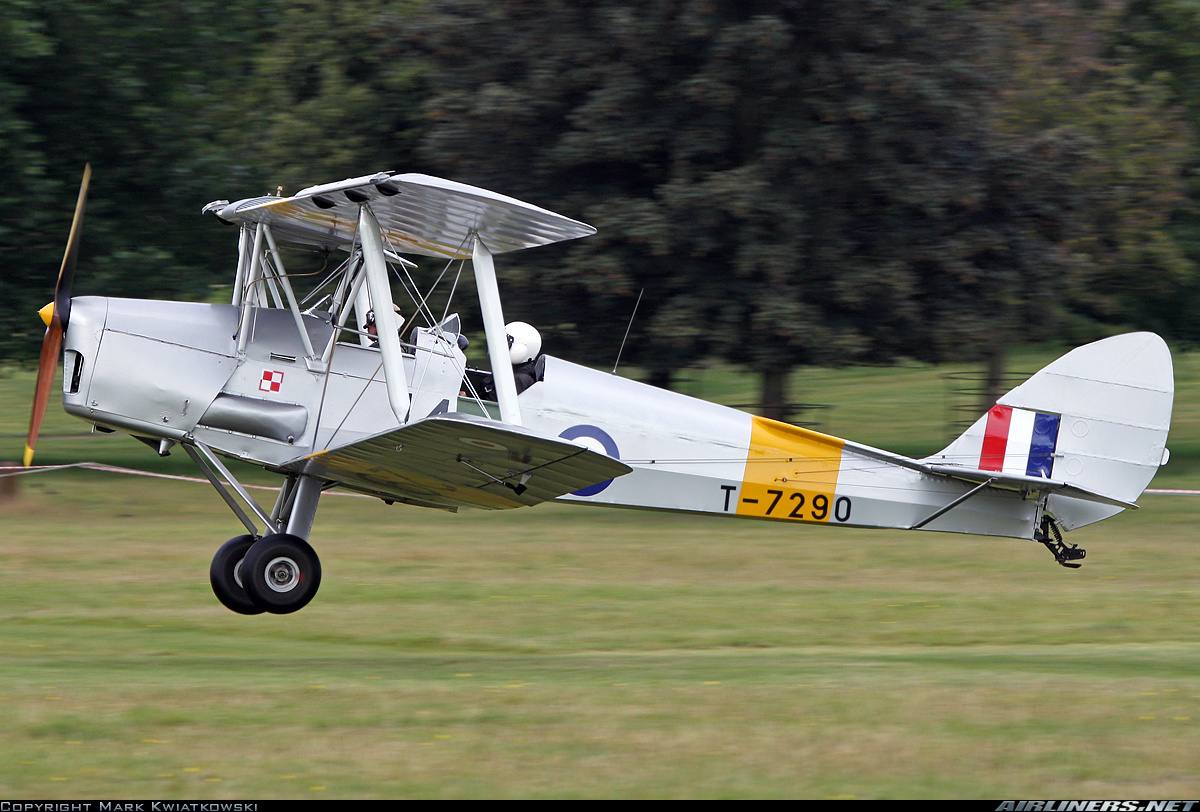
De Havilland DH82A Tiger Moth Untitled Aviation Photo 2550925
Aircraft Description The de Havilland Tiger Moth was designed in 1931 as a primary trainer for the RAF. During the following fifteen years, the DH.82 was to become the foremost training airplane flown by the Commonwealth's military and civilian pilots.

De Havilland DH.82 Tiger Moth Foto & Bild outdoor, flugzeug, luftfahrt Bilder auf
De Havilland DH 82A Tiger Moth. This classic British trainer made its first flight on Oct. 26, 1931. It is one of a number of models of light aircraft named for moths, in recognition of designer Geoffrey de Havilland's interest in moths and butterflies. It became popular with air forces throughout the United Kingdom as well as the civilian.

De Havilland DH82A Tiger Moth II aircraft picture Globus, Flugzeug
The Tiger Moth is regarded as among the most famous training aircraft ever. More than 7,300 Tiger Moths were constructed; this biplane was preferred by civilian and military training schools in the UK. Militaries in England, Canada, Australia, and New Zealand trained their fighter pilots on the Tiger Moth.

De Havilland DH82A Tiger Moth II Untitled Aviation Photo 3920183
The de Havilland D.H.82 Tiger Moth is a single-engine two-seat trainer biplane aircraft produced by the British manufacturer de Havilland Aircraft Company. The D.H.82 Tiger Moth is a development of the de Havilland D.H.60 Moth. Crew 2 next aircraft [Photo-ID: 2134] © Karsten Palt 2009-05-10 De Havilland DH 82 A Tiger Moth Reg.: G-AIPH c/n: 82981
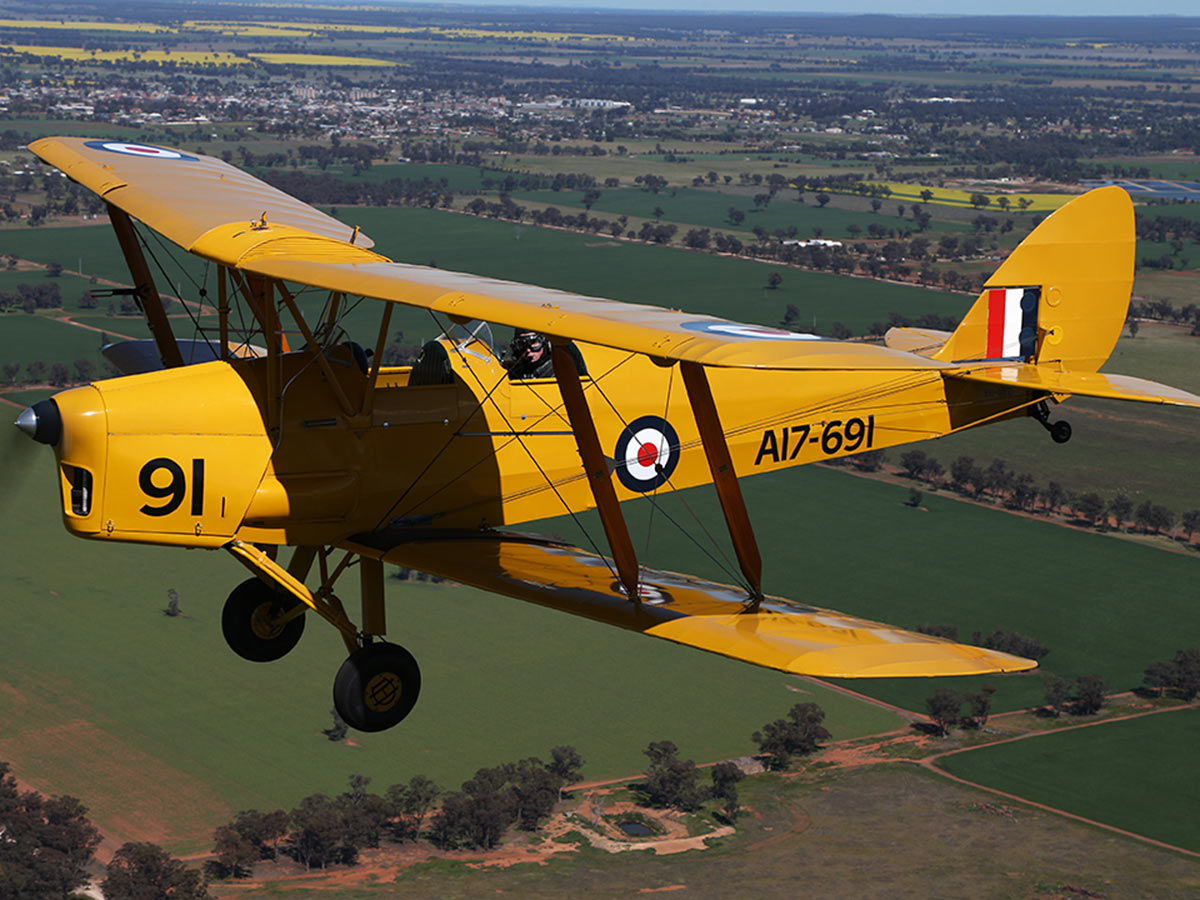
DH82A Tiger Moth Temora Aviation Museum
The de Havilland DH.82 Tiger Moth is a single-engined, biplane, taildragger aircraft with two seats in tandem configuration. It was developed principally to be used by private touring customers as well as for pilot instruction for both military and civilian operators.

De Havilland DH82A Tiger Moth II GAFVE. Mainka Jacek. Lens Benifontaine LFQL 16.09.2012
1940 DEHAVILLAND DH-82 TIGER MOTH Piston Single Aircraft Price: USD $80,460 USD $80,460 + GST = USD $88,506 ( GST applies to buyers in Australia) ( Price entered as: AUD $120,000) Payments as low as USD $540.09 / monthly* Aircraft Location: Perth, Western Australia, Australia Serial Number: A17130 Registration #: VH-AZT Total Time: 7,638
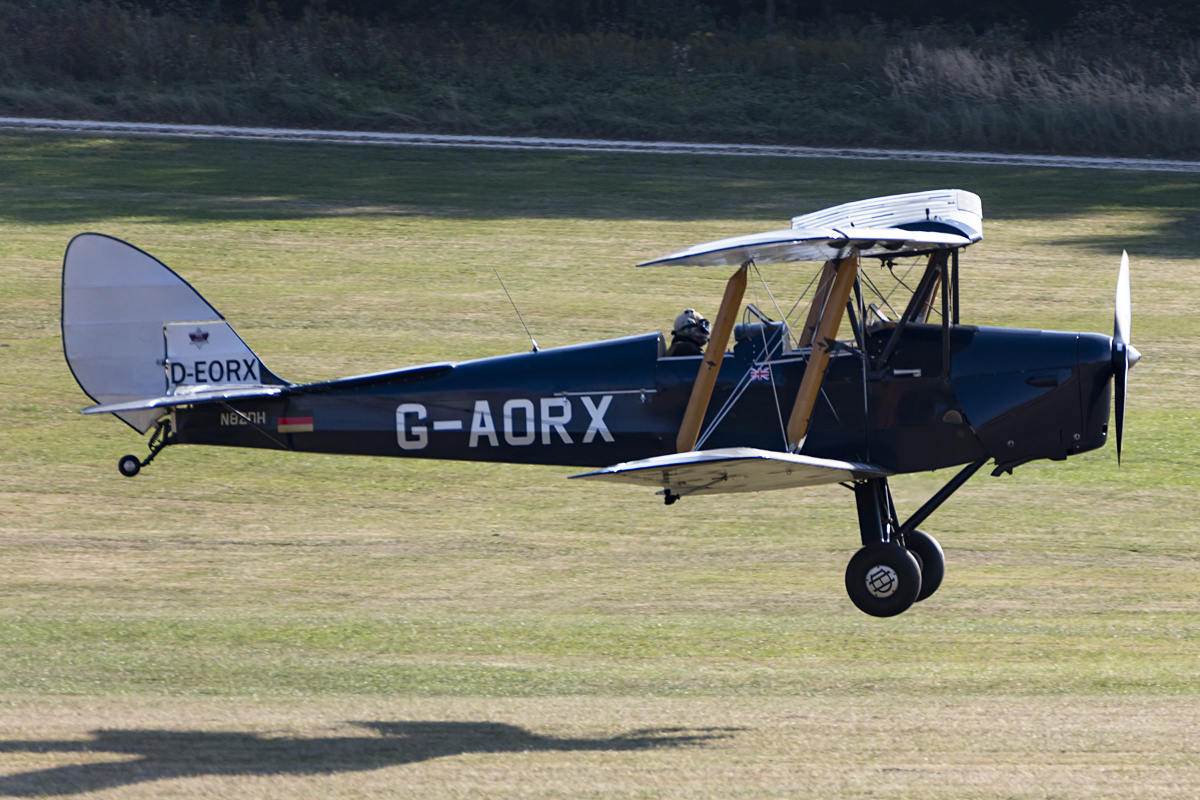
Private, DEORX, deHavilland, DH82A Tiger Moth, 09.09.2016, EDST, Flugzeugbild.de
24th May 2019 at 12:08pm. A newly-created experience in North Yorkshire will allow members of the public to have a taste of what flying in a 1930s British biplane was like. Introduced in 1932 and retired in 1959, the De Havilland Tiger Moth was used to train young airmen before they headed off to war. The Tiger Moth was adapted for the military.

Photos De Havilland DH82A Tiger Moth II Aircraft Pictures De havilland, Tiger moth, Vintage
Entworfen wurde das Flugzeug bei De Havilland. Entwickelt aus der DH.60 hatte die DH.82 "TigerMoth" ihren Erstflug im Oktober 1931. Motorisiert mit einem DeHavilland Gipsy IIIa (Vierzylinder mit ca. 130 PS) wurde das Flugzeug von der Royal Air Force als Schulungsflugzeug in größerer Zahl eingesetzt. Zu Beginn des Zweiten Weltkrieges waren.
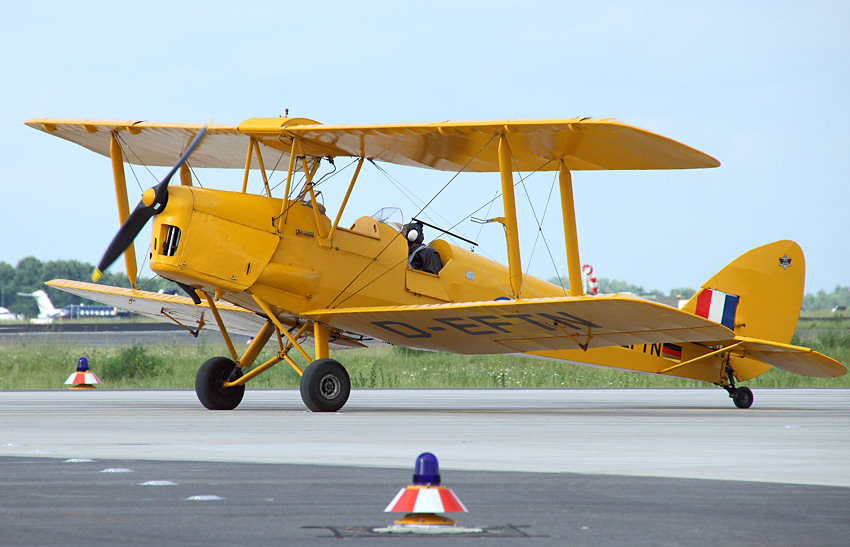
De Havilland D.H.82 Tiger Moth Trainingsflugzeug der Royal Air Force von 1931
Thirteen models were produced; the best known are the Gipsy and Tiger (in which second world war RAF pilots learned to fly), and 250 of the nearly 9,000 original Tiger Moths are still flying..
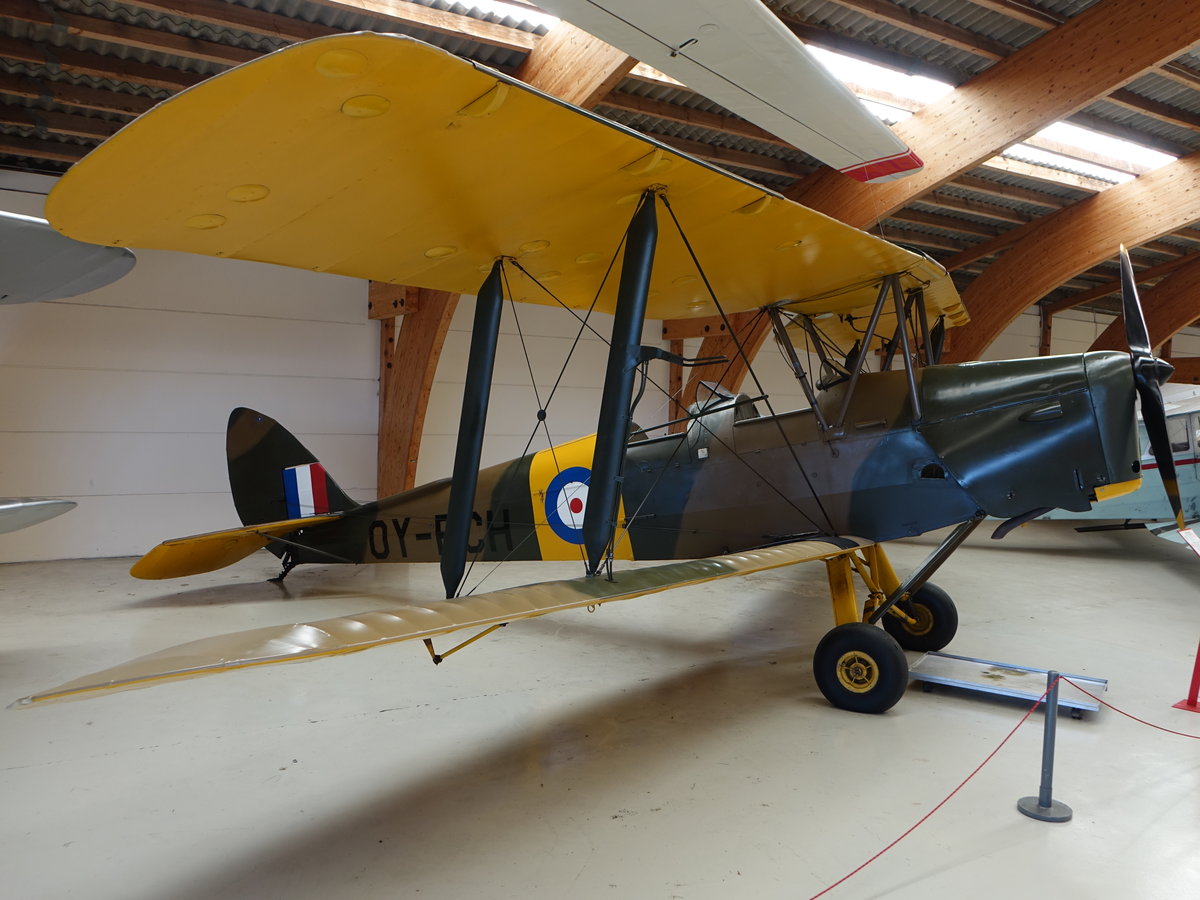
DeHavilland DH82 A "Tiger Moth" Fotos Flugzeugbild.de
Probably the best known training aeroplane ever, the Tiger Moth open-cockpit tandem two-seat biplane was first flown in 1931 from Stag Lane. It is a single bay biplane, with normal forward stagger to aid pilot vision, reduce the aerodynamic interference between the two wings, and ease cockpit access. The wings were given slight sweepback to.
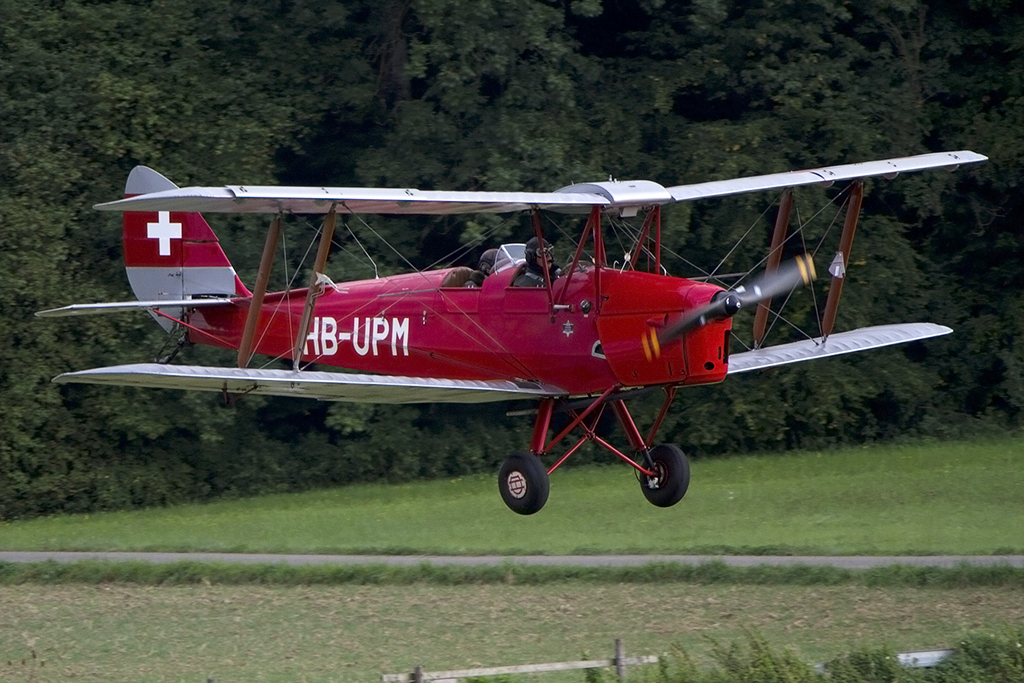
Private, HBUPM, deHavilland, DH82A Tiger Moth, 06.09.2013, EDST, Hahnweide, Germany Flugzeug
There were two of us flying the Tiger Moth that day: me and an 80-year-old gentleman who, if it was at all possible, looked even more excited than I did. We were both almost an hour early for our flights. The gentleman had also trained to be a private pilot when he was 17. in 1951, in a Tiger Moth. I was enthralled.
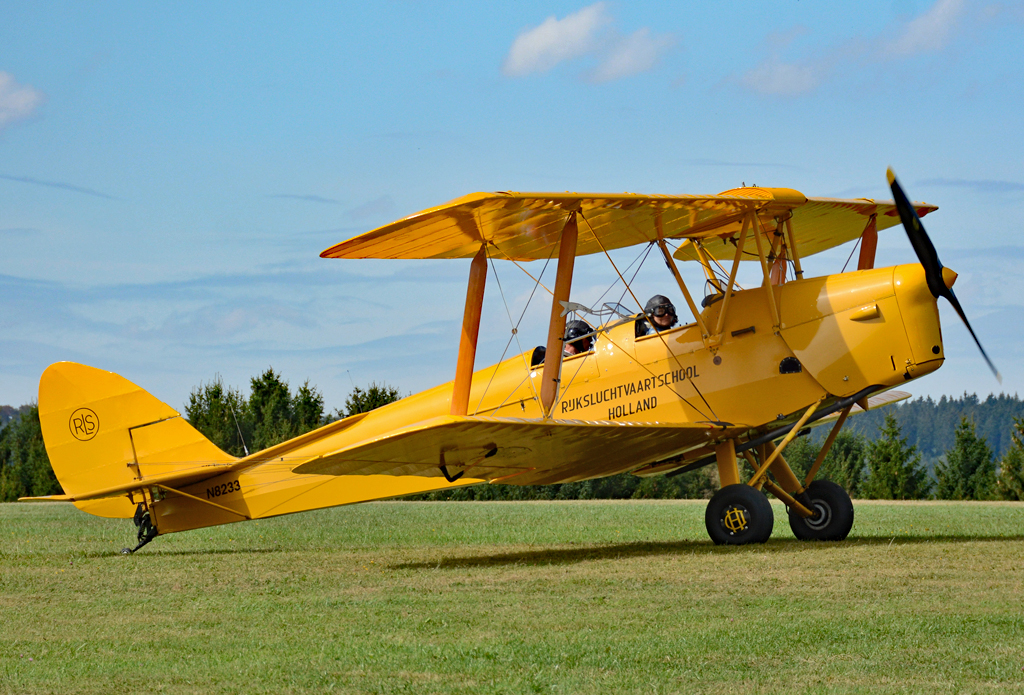
DH82A Tiger Moth, N8233, Baujahr 1942, rollt in Wershofen zum Start 03.09.2016 Flugzeugbild.de
The Tiger Moth is a true period piece. Even though Schwam's Moth is 1943vintage, a casual perusal of its bones will give the observer a lesson in state of the art engineering circa 1925. Aeroplane engineering had not separated from its much older cousin, civil engineering, so nearly every number, fitting and wire in the Moth, had its roots.